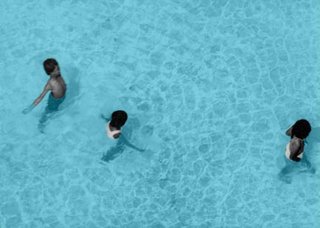
Now take a look at the lower right-hand corner of the picture, at the little blue shed containing Aruna Automobiles All Two Wheeler Service. Here it is in its proper scale:



How can this eastern candle (me!) burn in the palaces of the West?



Even the mind of a happy person is excited at the sight of a cloud. How much more so, when the one who longs to cling to his neck is far away?...
The wives of travellers, holding back the tips of their locks of hair, taking courage from their confidence (in their husbands' return), will look up at you raised on to the path of the wind...
cranes, like threaded garlands in the sky, lovely to the eye, will serve you...
...the eyes of the country women who are ignorant of the play of the eyebrows, who are tender in their affection, and who are thinking 'The result of the harvest depends on you'...
You will see the river Reva spread at the foot of Mt Vandhya, made rough with rocks and resembling the pattern formed by the broken wrinkles on the body of an elephant....
you who have made a momentary acquaintance with the flower-picking girls by lending shade to their faces...
On the way, after you have ascended to the Nirvandhya River, whose girdles are flocks of birds calling on account of the turbulence of her waves, whose gliding motion is rendered delightful with stumbling steps, and whose exposed navel is her eddies...
Reveal the ground with a bolt of lightning that shines like a streak of gold on a touchstone to the young women in that vicinity going by night to the homes of their lovers along the royal highroad ...
which has been robbed of light by a darkness that could be pricked with a needle. Withhold your showers of rain and rumbling thunder: they would be frightened!...

At a time when the Indian plains are seething and writhing with heat, staring at this picture, which I took years ago in Bangalore, may cool you off a little, as it did me and my guests.



The idea is disarmingly simple. Two bronze sculptures pee into their oddly-shaped enclosure.
While they are peeing, the two figures move realistically. An electric mechanism driven by a couple of microproccesors swivels the upper part of the body, while the penis goes up and down. The stream of water writes quotes from famous Prague residents.
Visitor can interupt them by sending SMS message from mobile phone to a number, displayed next to the sculptures. The living statue then ‘writes’ the text of the message, before carrying on as before.